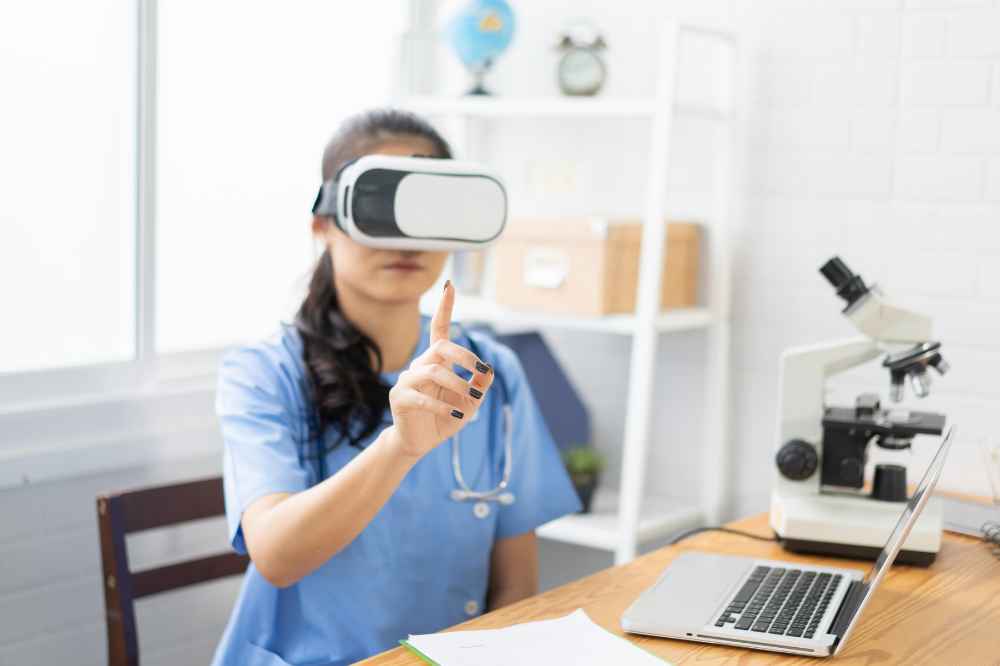Artificial intelligence isn’t the only (relatively) new kid on the teaching block. AR (otherwise known as augmented reality) is another branch of technology that is changing industries worldwide. While it may be some time before it becomes commonplace, augmented reality is worth the investment for your classroom.
Don’t worry; the 2D teaching resources you’ve used for years aren’t going anywhere. AR in education brings a 3D element to the game, allowing students to explore everything from dinosaurs to human organs more deeply and nuanced than ever.
There are many benefits to bringing augmented reality into the classroom. These are just the top five:
1. Enhances Engagement Through Interactive Learning
Traditionally, classroom settings rely on passive learning methods (e.g., presentations, pre-recorded videos, lectures, etc.), leaving pupils yearning (often subconsciously) for more engaging, interactive experiences—like those provided by augmented reality in education!
This technology brings a much-needed shift in how educators conduct their lessons, offering enhanced learning opportunities through interactivity. By merging physical and digital realms, AR turns otherwise confusing, abstract concepts into tangible events that are more enjoyable and effective to engage with.
For instance, you can boost history lessons by letting pupils virtually explore landmarks or witnessing crucial events unfold in a 360-degree experience. Such levels of engagement are fantastic for long-term retention and empowering students to become active participants in their learning journey.
Augmented reality’s immersive, interactive nature doesn’t just captivate and engage students’ interests, but it also encourages collaboration between peers. They can engage with each other and the content to explore and solve captivating challenges. To put it simply, AR makes learning more engaging. What teacher wouldn’t want that?
2. Makes Complex Subjects More Understandable
Let’s use science as an example here. It’s a notoriously complex subject, with many variables and information to consider. However, AR simplifies it by helping students visualize complex concepts. Whether it’s a tiny animal cell or a huge planet, interacting with them in a “hands-on” manner helps pupils understand the components of each.
The same goes for biology. Can you imagine anything more magical and memorable than holding a 3D model of a human heart? AR in education gives your students that experience, enchanting and motivating them to understand even the most confusing topics.
And this is just one subject! You can use augmented reality to bring the past to life in history, make convoluted fictional worlds more immersive, and so much more. You’ll undoubtedly be surprised by its ability to make typically tricky subjects easier.
3. Promotes Active Learning and Retention
Through its integration of virtual elements into the physical world, augmented reality allows students to actively engage with the material rather than passively listen or read it. This hands-on interaction with virtual objects and realistic simulations deepens their understanding and develops problem-solving skills, critical thinking, curiosity, and retention—the latter being one of the most important.
Knowledge retention has always been a challenge, no matter the grade. Traditional methods often fail to provide long-term information retention as pupils struggle to connect abstract concepts to real life. AR, however, works to solve this decades-long issue.
Research shows that the amalgamation of auditory and visual stimuli in augmented reality in education drastically boosts information recall compared to traditional teaching methods. Students who can see and interact with virtual items related to the subject they’re studying are more likely to retain the knowledge over time. Such a foundation of knowledge extends far beyond the classroom.
4. Supports Accessibility and Inclusive Learning
While many tools promise to elevate accessibility and inclusivity within learning environments, augmented reality (AR) is one of the most promising. It boasts the potential to banish barriers to education and let everybody engage with learning experiences.
One key element when considering inclusive education is the interests of those with disabilities or special educational needs. Interestingly, augmented reality catches the interest of students with disabilities and special educational needs. With that in mind, researchers analyzed several studies. They concluded that pupils with auditory limitations, ASD, ADHD, and dyslexia are particularly eager to engage with and benefit from AR in education.
Beyond that, augmented reality applications include real-time captions, audio descriptions, and translations, making content more accessible to those with language barriers, sensory impairments, or disabilities. They can also simulate physical environments, helping individuals with mobility challenges engage in all manner of learning experiences.
5. Bridges the Gap Between Theory and Practice
As previously explained, traditional teaching methods often fail to bridge the gap between theory and practice. However, augmented reality changes the game. Breathing life into concepts and theoretical knowledge gives practicality to the material, deepening understanding and helping students retain the newly learned information.
Take physics, for example. Augmented reality simulations allow pupils to see abstract principles in action, making concepts more tangible and easier to understand.
Integrate AR Into Your School Today!
Bringing AR to your classroom has innumerable benefits, including bridging the often-wide gap between theory and practice, supporting accessibility and inclusive learning, promoting active learning and retention, making complex subjects more digestible, and enhancing engagement.
If you’re looking to improve your school’s brand image and attract more students, explore our school website design!







